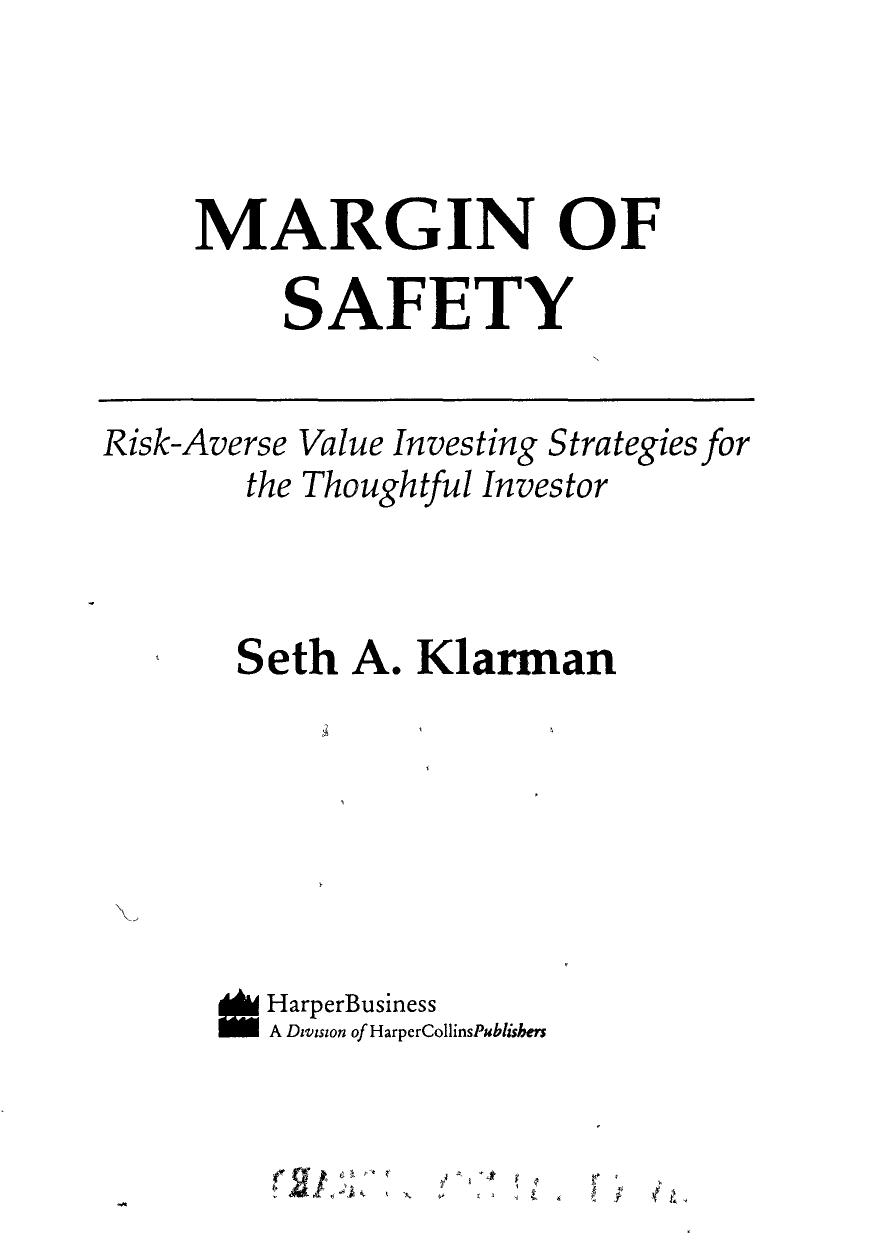Margin of Safety by Seth Klarman

Author:Seth Klarman
Language: eng
Format: mobi, pdf, epub
Published: 2007-11-10T16:17:32+00:00
8.The Art of Business Valuation
Many investors insist on affixing exact values to their investments, seeking precision in an imprecise world, but business value cannot be precisely determined. Reported book value, earnings, and cash flow are, after all, only the best guesses of accountants who follow a fairly strict set of standards and practices designed more to achieve conformity than to reflect economic value. Projected results are less precise still. You cannot appraise the value of your home to the nearest thousand dollars. Why would it be any easier to place a value on vast and complex businesses?
Not only is business value imprecisely knowable, it also changes over time, fluctuating with numerous macroeconomic, microeconomic, and market-related factors. So while investors at any given time cannot determine business value with precision, they must nevertheless almost continuously reassess their estimates of value in order to incorporate all known factors that could influence their appraisal.
Any attempt to value businesses with precision will yield values that are precisely inaccurate. The problem is that it is easy to confuse the capability to make precise forecasts with the ability to make accurate ones. Anyone with a simple, hand-held calculator can perform net present value (NPV) and internal rate of return (IRR) calculations. The NPV calculation provides a single-point value of an investment by discounting estimates of future cash flow back to the present. IRR, using assumptions of future cash flow and price paid, is a calculation of the rate of return on an investment to as many decimal places as desired. The seeming precision provided by NPV and IRR
calculations can give investors a false sense of certainty for they are really only as accurate as the cash flow assumptions that were used to derive them.
The advent of the computerized spreadsheet has exacerbated this problem, creating the illusion of extensive and thoughtful analysis, even for the most haphazard of efforts. Typically, investors place a great deal of importance on the output, even though they pay little attention to the assumptions. “Garbage In, Garbage Out” is an apt description of the process.
NPV and IRR are wonderful at summarizing, in absolute and
percentage terms, respectively, the returns for a given series of cash flows.
When cash flows are contractually determined, as in the case of a bond, and when all payments are received when due, IRR provides the precise rate of return to the investor while NPV describes the value of the investment at a given discount rate. In the case of a bond, these calculations allow investors to quantify their returns under one set of assumptions, that is, that contractual payments are received when due. These tools, however, are of no use in determining the likelihood that investors will actually receive all contractual payments and, in fact, achieve the projected returns.
A Range of Value
Businesses, unlike debt instruments, do not have contractual cash flows. As a result, they cannot be as precisely valued as bonds. Benjamin Graham knew how hard it is to pinpoint the value of businesses and thus of equity securities that represent fractional ownership of those businesses.
Download
Margin of Safety by Seth Klarman.pdf
Margin of Safety by Seth Klarman.epub
This site does not store any files on its server. We only index and link to content provided by other sites. Please contact the content providers to delete copyright contents if any and email us, we'll remove relevant links or contents immediately.
| Analysis & Strategy | Bonds |
| Commodities | Derivatives |
| Futures | Introduction |
| Mutual Funds | Online Trading |
| Options | Portfolio Management |
| Real Estate | Stocks |
Rich Dad Poor Dad by Robert T. Kiyosaki(6414)
Pioneering Portfolio Management by David F. Swensen(6230)
How To Win Friends and Influence People by Dale Carnegie(4447)
The Money Culture by Michael Lewis(4083)
The Dhandho Investor by Mohnish Pabrai(3706)
The Wisdom of Finance by Mihir Desai(3658)
Liar's Poker by Michael Lewis(3372)
Fooled by Randomness: The Hidden Role of Chance in Life and in the Markets by Nassim Nicholas Taleb(3049)
The ONE Thing by Gary Keller(3010)
The Intelligent Investor by Benjamin Graham Jason Zweig(2995)
Mastering Bitcoin: Programming the Open Blockchain by Andreas M. Antonopoulos(2983)
Rich Dad Poor Dad: What The Rich Teach Their Kids About Money - That The Poor And Middle Class Do Not! by Robert T. Kiyosaki(2909)
How to Day Trade for a Living: Tools, Tactics, Money Management, Discipline and Trading Psychology by Andrew Aziz(2909)
Investing For Dummies by Eric Tyson(2894)
How to Win Friends and Influence People by Dale Carnegie(2863)
Market Wizards by Jack D. Schwager(2645)
The Psychology of Money by Morgan Housel(2633)
Zero Hour by Harry S. Dent Jr. & Andrew Pancholi(2614)
How to Pay Zero Taxes, 2018 by Jeff A. Schnepper(2603)
